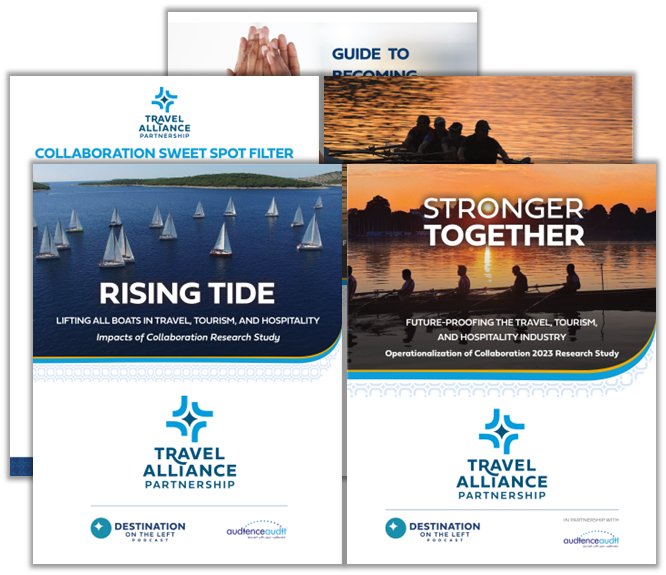The Media, Travel and You: Top PR Trends and Tips of 2018
Earlier this month, I attended the annual PRSA Travel & Tourism Conference in New Orleans, a gathering of media and tourism professionals from across the country. The three-day conference was jam-packed with learnings specific to the tourism industry – the best of which was an in-depth look at 2018 travel trends, straight from the mouth of the media themselves.

So, what are the media saying about our pitches, “unique” experiences, and emerging destinations? Well, first of all…
Lose the Overused Words
Journalists receive on average 50-100 pitches a day, sometimes more depending on their publication and position. And they are tired of seeing the same phrases repeated by PR pros, who think everything they have is “unique,” “authentic,” or “one-of-a-kind.” A survey of the most overused words in any travel pitch revealed that these are so common they lose their meaning – nothing is truly unique anymore. So scratch them from your vocabulary and find new ways to convey your attractions, assets, and partners.
Oh, and skip these too:
- Farm-to-Table
- Award-winning/Acclaimed/Best of/World Class
- Off-the-beaten-path/Hidden Gem
- Something for everybody
- Breathtaking/Incredible/Amazing
- Craft/Bespoke/Artisanal
Tired Topics Won’t Gain Traction
Along with the overused words are the topics that are starting to crop up over and over and over. What used to be new and fun is becoming the norm in the tourism industry.
Does your destination offer Goat Yoga? So does everyone else. Farm-to-Table Restaurants? We’ve seen it. Glamping? So 2017. This year, skip the trendy and dive deeper for the real story behind your destination. Are the goats all rescue goats getting a second chance? Does your farm-to-table restaurant also grow and forage all of its food on site? Is your glamping site located on top of a picturesque mountain? Or next to a scenic waterfall? Or far removed from civilization? Think big and dig deep to make your pitches really stand out.
Take Note of These Travel Trends
Some trends are here for the long haul, and still of interest to journalists and travelers alike. In 2018, the media is still seeing demand for stories on solo travel, multi-generational travel, experiential, eco-friendly, and senior or female-focused trips. Theme your topics around the audience and meet the demand that is ever-growing among these types of travelers. Throw in a road trip or two, and you’ll hit all the high notes with your next pitch.
Frequent Follow Up Walks a Fine Line
Once the pitch is out the door, it’s a waiting game to see if the media is going to bite. And while it might be tempting to follow up a few times – use caution. In an Editor’s Roundtable at the conference, members of the media were clear about pestering PR people – it’s a no. Some said that no response is an answer, if you don’t hear back, they just aren’t interested. Others welcomed one follow up email but noted that no response after a second time meant that PR pros should just move on.
And don’t even think of picking up the phone unless you have a personal relationship with the writer or editor. Cold calls are less desired than ever, and one sure-fire way to land yourself on the blacklist.
The best way to get a response is to do your research – extensively. Know who you are pitching, what they write about, and how they like to frame their stories. A little googling goes a long way, and the information is out there.
Media FAM Faux-Pas to Avoid
Media FAMs allow journalists to dive in and experience a destination firsthand, but without careful planning can lead to a flop instead of a feature story. At the conference, travel writers talked about their needs when visiting a destination and cautioned TPAs and PR people to consider specifics like adding in free time and the pacing of meals and food when planning a trip.
Turn-offs for FAMs include lack of lead time on invitations, requesting letters of assignment, group FAMs with too many writers, and not allowing the writer access to locals and in-depth stories.
In the ever-changing world of traditional media versus influencers, PR pros also need to understand that the two have different needs – influencers require almost constant access to WiFi, time to utilize social channels throughout their visit, and extra time for photos. Take this into consideration when planning and it’s sure to pay off for you both.
Online/Print Publications Producing Prime Content
In today’s media landscape, travel content is coming from everywhere – blogs, social channels, lifestyle magazines, print and online. Some of the publications that we were told to keep an eye on might surprise you – everything from Men’s Journal to Wired to the Smithsonian Magazine. Think outside the box when you begin your travel outreach and go past the tried and true outlets to seek out the right audiences for your destination. A few of the publications producing top-tier travel coverage include:
- Saveur
- GQ
- Surface
- Vogue
- Garden & Gun
- Roads & Kingdoms
- Lonely Planet
- Fodor’s
- Fathom
- Culinary Backstreets
- Forbes
- CNN
Publications like Atlas Obscura, Travel + Leisure, Conde Nast Traveler, National Geographic, Outside Magazine, and Hemispheres also made the list – producing top travel content online, in print, and in video and seeking out new potential customers and readers every day.
Keep your content fresh, concise, and creative, and you’ll see the coverage start pouring in! And check out our blog on How to Host a Travel Writer: A Guide for Destinations for more tips on media vs. influencers and how to make your next FAM a success.
Author
Related Posts
Welcoming All 2.0: Key Takeaways from Our Community Conversation on Inclusion in Tourism
In our rapidly evolving travel industry, the concept of being a “welcoming destination” is no longer simply about inviting more visitors. It’s about deeply understanding…
10 Must-Listen Podcasts for Travel, Tourism & Hospitality Professionals
I’ve had the joy of hosting Destination on the Left—an award-winning podcast spotlighting the travel, tourism, and hospitality industry—since 2016. My team and I believe…
